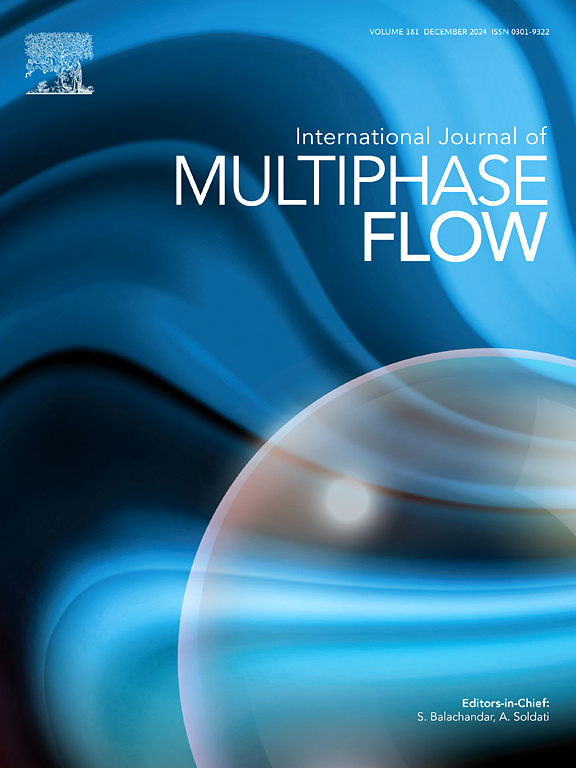Salts promote or inhibit bubbly drag reduction in turbulent Taylor–Couette flows
IF 3.6
2区 工程技术
Q1 MECHANICS
International Journal of Multiphase Flow
Pub Date : 2024-12-09
DOI:10.1016/j.ijmultiphaseflow.2024.105078
引用次数: 0
Abstract
Bubbly drag reduction is considered as one of the most promising techniques to reduce the energy consumption of marine vessels. With this technique bubbles are injected under the hull where they then lubricate the hull, thus reducing the drag of the vessel. Understanding the effects of salts on bubbly drag reduction is therefore of crucial importance in the application of this technique for salt waters. In this study we investigate the effects of , , substitute sea salt, and on the reduction of drag by bubbles in turbulent Taylor–Couette flow. We find that , , and substitute sea salt inhibit bubble coalescence, leading to smaller bubbles in the flow, which prove to be less effective for bubbly drag reduction. For these salts we find that the ionic strength is a decent indicator for the observed drag reduction and solutions of these salts with an ionic strength higher than show little to no drag reduction. In contrast, solutions do not inhibit bubble coalescence and for this salt we even observe an enhanced drag reduction with increasing salt concentration. Finally, for all cases we connect the observed drag reduction to the bubble Weber number and show that bubble deformability is of utmost importance for effective bubbly drag reduction.
求助全文
约1分钟内获得全文
求助全文
来源期刊
CiteScore
7.30
自引率
10.50%
发文量
244
审稿时长
4 months
期刊介绍:
The International Journal of Multiphase Flow publishes analytical, numerical and experimental articles of lasting interest. The scope of the journal includes all aspects of mass, momentum and energy exchange phenomena among different phases such as occur in disperse flows, gas–liquid and liquid–liquid flows, flows in porous media, boiling, granular flows and others.
The journal publishes full papers, brief communications and conference announcements.

 求助内容:
求助内容: 应助结果提醒方式:
应助结果提醒方式:


